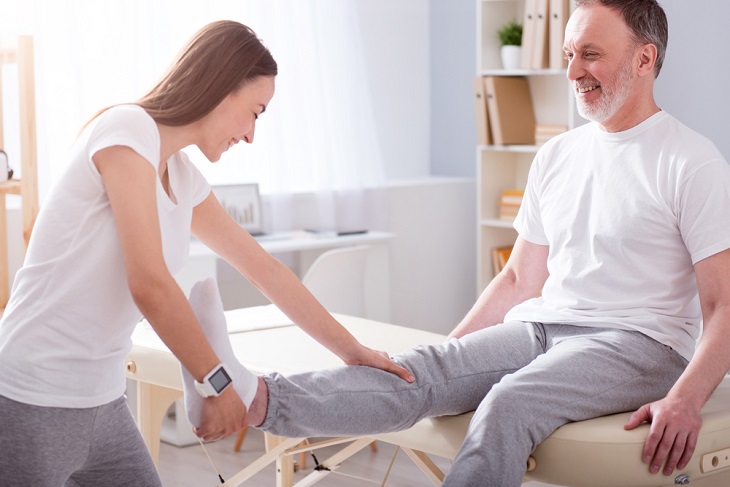
Your feet normally have an arch on the sole but if you have a flat arch, you might find some limitations in your physical activities. You might also feel body pain and discomfort in your feet, legs, and lower back from time to time.
Flat feet or fallen arches are medically termed pes planus. This condition applies to soles without any arch or curve on its inner sides.
Infants commonly have flat feet because their ligaments and tendons aren’t completely developed until age 3. Around 18 million Americans or about 8% of the U.S. adult population, however, have fallen arches.
What Happens If You Have Flat Feet?
Although having flat feet is rarely a serious and life-threatening condition, it can lead to health issues. Simple activities like walking, running or even standing for hours can become bothersome if you have flat feet. People with flat feet are also more prone to have plantar fasciitis, a medical condition wherein the plantar ligament at the bottom of your feet becomes inflamed.
Some of the common health concerns that affect people with flat feet include:
- Pain and swelling around the heels and inner sides particularly after long walks.
- Foot fatigue after standing for long hours.
- Difficulty in moving the feet, especially around the toes.
- Formation of bunions or calluses caused by ill-fitting shoes.
- Pain or discomfort that spreads on the legs and the lower back.
- Excessive pronation where most of your body’s weight falls on your sole, which might cause further foot injuries.
Flat feet can also intensify conditions like:
- Arthritis, or inflammation in and around the joints
- Achilles tendinitis, or inflammation of the Achilles heel tendon
- Hammertoe, or curling and clawing deformities of the toes due to pressure from ill-fitting footwear
Why Do You Have Flat Feet?
The foot has 26 bones, 33 joints, and a hundred ligaments, muscles, and tendons that weave efficiently to support and align the body. Such a complicated structure, however, forms differently with each person.
As you grow older, arches mold on your feet on the lateral, medial, and anterior sides. These arches serve as your feet’s shock absorbers, allow feet flexibility, and affect gait and balance.
Having flat feet is either an acquired or a congenital condition. Your family history and any history of injuries and trauma on the feet will help determine the cause, especially if you’re an athlete or you do regular strenuous physical activities.
Disorders or health conditions like cerebral palsy, arthritis, diabetes, and obesity can also lead to fallen arches formation. Pregnant women and older people can develop flat feet, too.
How Can You Tell if You Have Flat Feet?
A doctor or a podiatrist will be able to diagnose fallen arches by first asking about any inherited foot problems in your family. Aside from checking your gait and the way you walk barefooted, doctors will also consider your work and recreational activities, including the type of shoes you wear. You might also be asked to undergo imaging tests, such as X-rays, MRI or CT scans to detect developing conditions that contribute to the pain and discomfort.
If you’d like to do a self-test, try walking with wet feet on a concrete surface and check your footprints. A normal foot’s imprint will show curves on the inner side. A flat foot will show a full imprint to indicate missing arches.
You might also notice your shoes easily wearing out on the soles if you have flat feet because of over-pronation.
How to Manage Flat Feet Health Problems?
If you’re in pain due to flat feet, doctors can prescribe a pain medication or an anti-inflammatory drug. Without pain, however, treating the condition won’t require any medication. You can manage the discomfort with simple therapy and tools.
- Do stretching and foot exercise to help with the flexibility of the tendon.
- Wear cushioned shoes instead of fashionable footwear that might offer little or no support for flat feet.
- Consider using orthotic devices bought at sporting goods stores or drug stores to help with the feet’s alignment and support. You can also wear foot splints for sleeping to relieve pain and improve mobility, especially if you already have plantar fasciitis.
- Get rest if your feet are tired and weary.
- Use a cold compress on your feet to help with the swelling.
- Try to lose weight if obesity aggravates the problem as it can help minimize the stress your feet have to bear.
- Don’t overdo your exercises, especially for activities like running, biking, basketball, tennis, and soccer.
- Adjust your social and work activities, especially if you’re used to standing and walking for long hours.
- Get physical therapy, especially if the fallen arches became a complication of injuries, as in the case of runners.
While there’s no serious health threat to flat feet, it’s always better to get help from a professional when the pain or discomfort doesn’t alleviate after you make these lifestyle changes. Seeking an expert’s advice also gives you other options that can satisfy the specifics of your flat feet issues.







